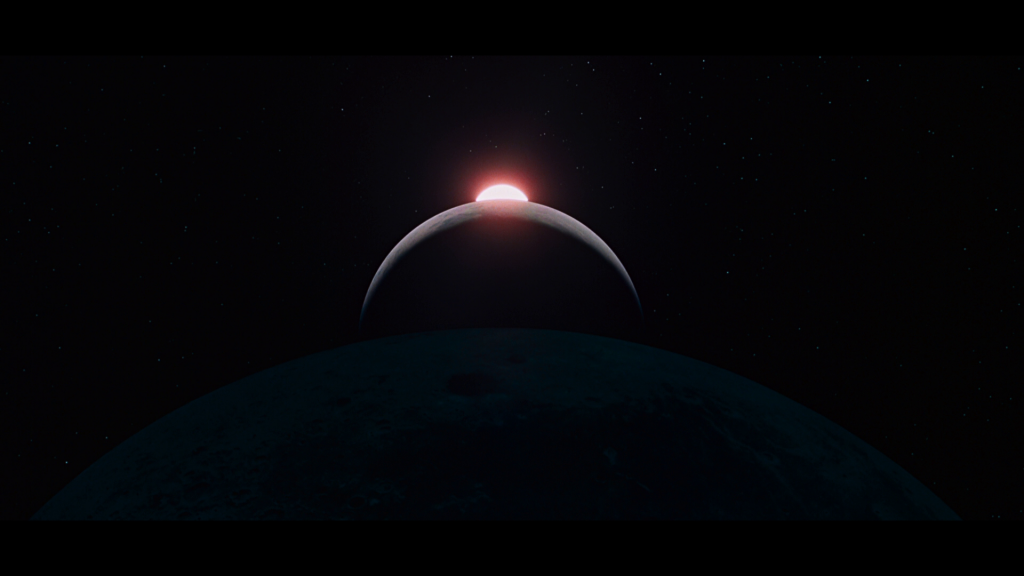The film is known to be Stanley Kubrick’s most radically innovative and experimental film that was funded as a commercial film. It is referred to as “a superproduction” or, “a visionary poem.” Exaggerating? I don’t think so.
In 1968, the film provided a unique spectatorial experience: it put space travel and the theme of evolution on the big screen. What we call the IMAX today, the semi circular screen innovation and multi directionality sound was new at that time. Engulfing the spectator experientially into the film was the key point. There was a radical departure from the narrative understandings of its time, especially regarding the use of sound.
Note that this is a futuristic science fiction film. Kubrick based the film on serious scientific research on development of computer and space travel. This stuff didn’t exist then, all are imaginary! As all the space vehicles were based on the filmmaker’s imagination on how they would look like, there is a strong emphasis on their visuality in the vast space.
While the space gives some sense of vastness, the story and dialogue come delayed. This gives a sense of extended duration that space travel would involve, and it is an attempt to convey a sense of evolutionary time. Keep in mind that the story time begins from the dawn of men. Together with it, both vehicles and computers are presented as a kind of evolution.
Which brings us to HAL the computer! It is represented to have a brain, eyes as red circular lights, and a voice that is everywhere. The source of the voice is not always shown, as if it is outside the film’s spatial reality: An all seeing and all knowing entity.

In terms of film sound, the film theorist Michel Chion claims that sound adds to the image and gives it a meaning. By sound, we refer to three aspects of soundtrack: speech (dialogue), music, noise (sound effect). Sound has a secondary status against image as it is more elusive where image is more concrete. For instance, if you pause a film on television, the image is present but the sound is not. Sound is always heard in relation to the image.
Given the importance of sound in cinema, notice how it is privileged in this film. It carries the time passages even when the characters are not there. Music is used as a major aesthetic factor with powerful classical pieces, especially Strauss. Moreover, there are hardly any truly silent moments in the film. If the characters are not speaking, there is a sound: humming, buzzing, vehicle motors, breathing, doorway sounds, beeps… Even the total silence moments in outer space are experienced, and they constitute a music score.
When Kubrick is asked the metaphysical message in an interview for the Playboy magazine, he replies: “It is a non-verbal experience, I won’t ever say it verbally.” So let’s just experience it as a powerful imagistic and musical experience.
